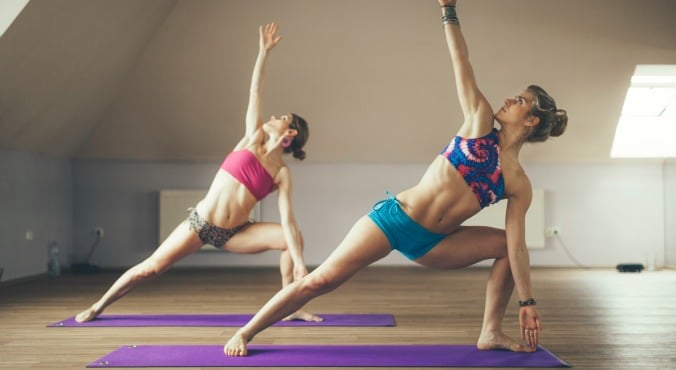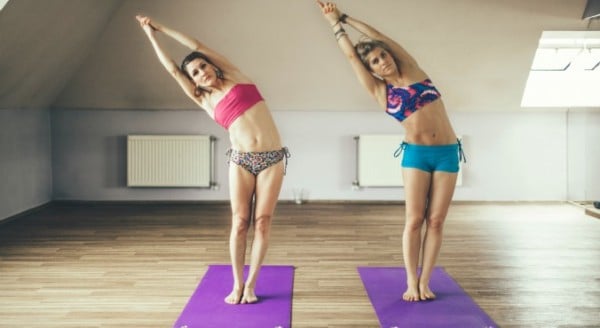
Image via iStock.
Spending 90 minutes confined to a room that is 40 degrees Celsius and 40 per cent humidity is a concept that baffles me.
Sweating it out in blistering temperatures while holding difficult poses? I’ll stick to my leisurely strolls in mild conditions, thanks.
But can adding heat to your workout really have added benefits? We found out.
Reasons to turn up the heat.
While I might poo-poo my Bikram Yoga-loving friends, there are some benefits to exercising in hot conditions, says Physiotherapist Michael Dermansky, the Managing Director of MD Health Pilates.
“[Exercising in high temperatures] causes a heat adaptation effect, which means that your body increases circulating blood volume and your heart is able to pump more efficiently,” he explains.
But according to Mr Dermansky, these improvements to fitness performance are “short term”, and only useful in preparation for an upcoming event, “not for long term fitness”. So if you’re heading to the yoga studio as a recreational fitness activity, the long-term cardiovascular benefits you will experience could be minimal.
Aside from its calming nature and spiritual appeal, Bikram Yoga can have other benefits.
“You can also experience increased flexibility by working out in a heated environment,” says Amanda Fisher, Personal Trainer and Yoga Instructor at Bangin’ Bodz. (Post continues after gallery.)
Celebrities doing yoga.
So, if you’re not the world’s most flexible yogi, training in warmer conditions also helps you to stretch a little further and reach those extra-tricky yoga poses.
